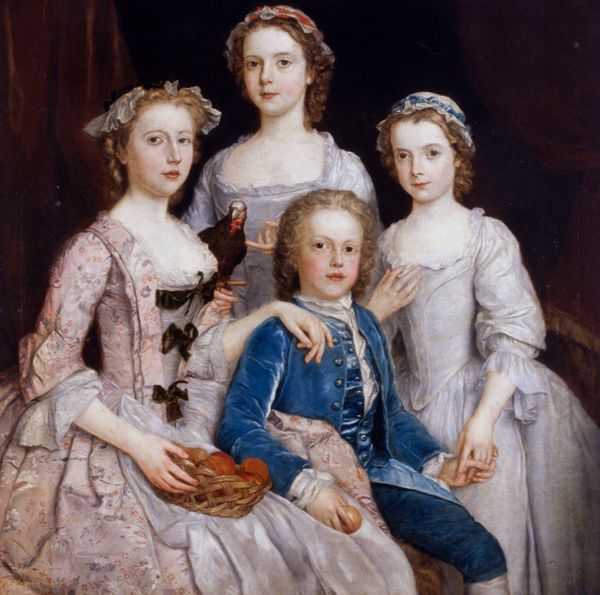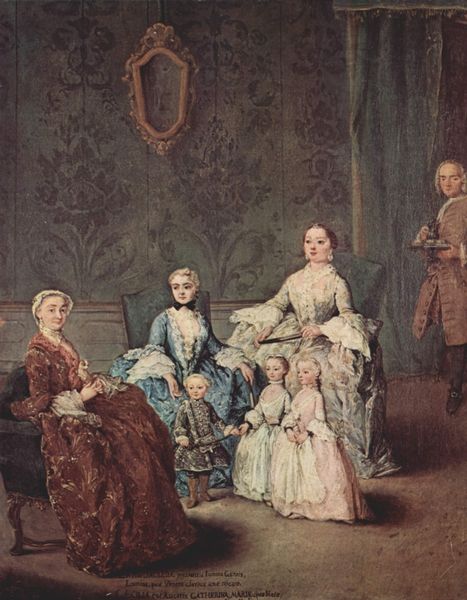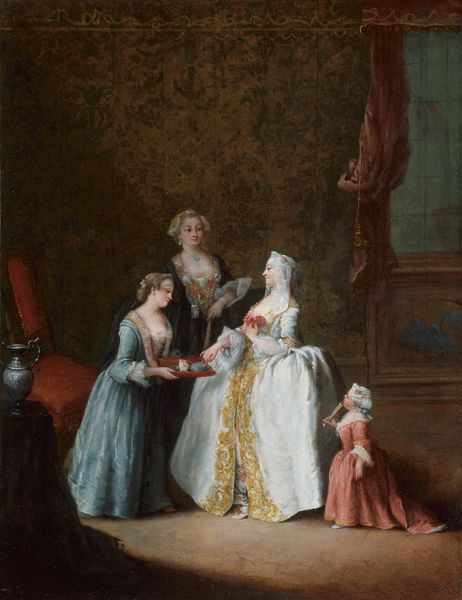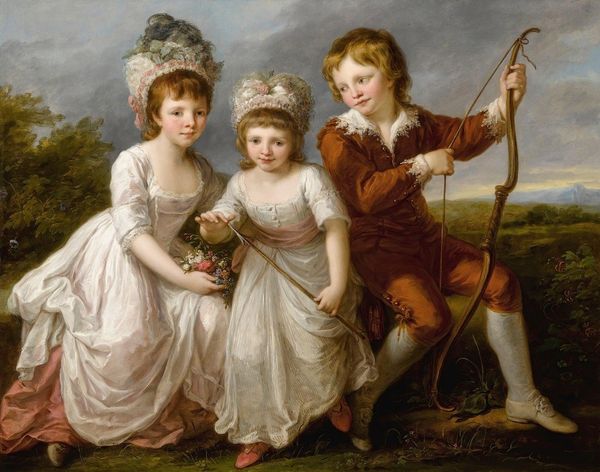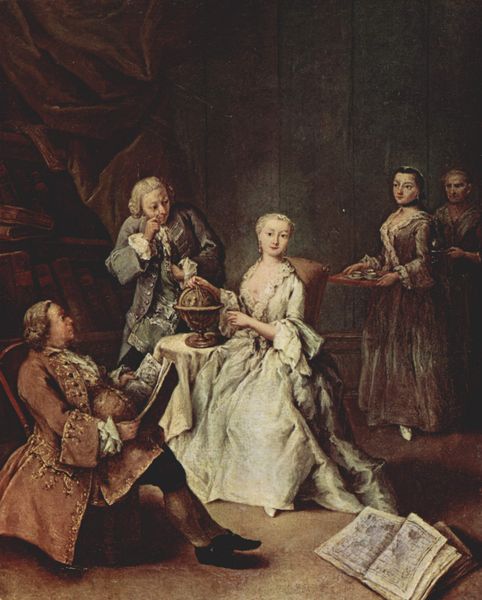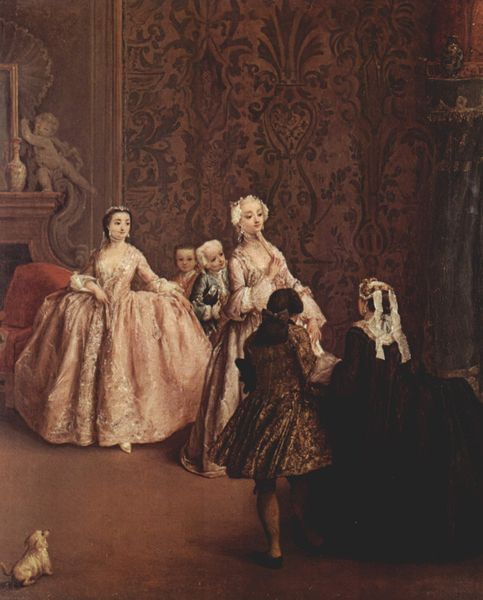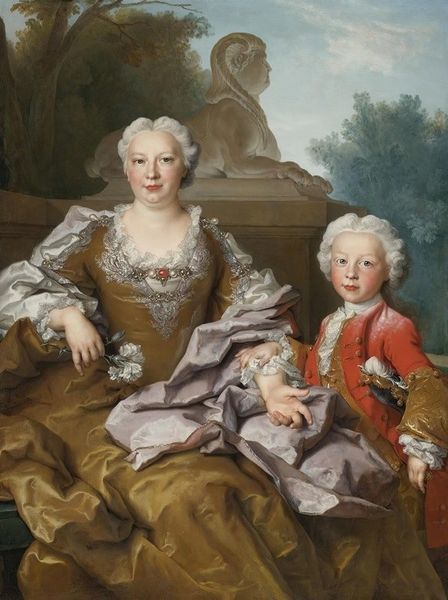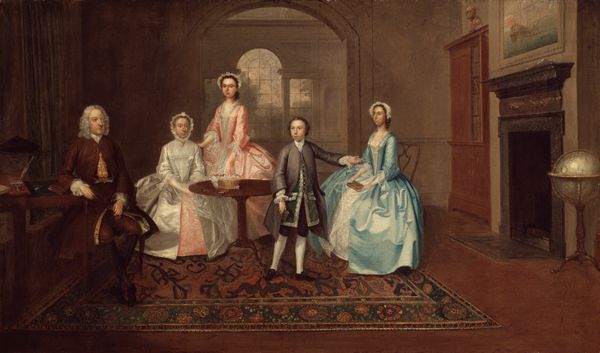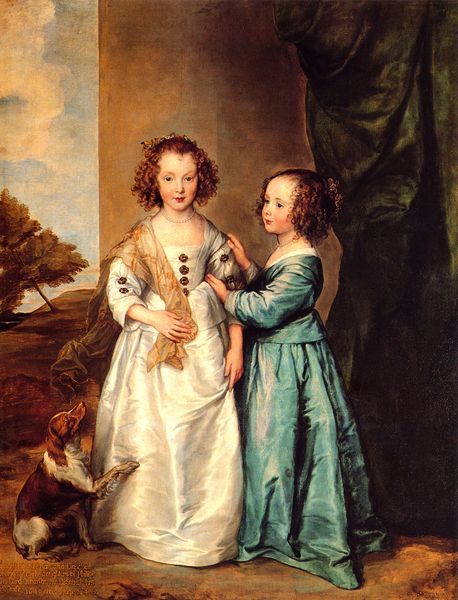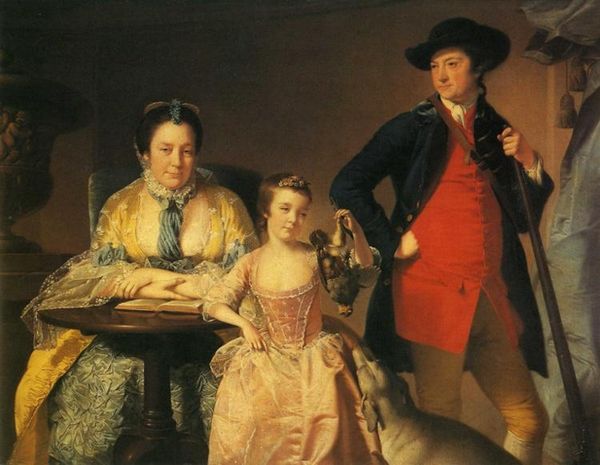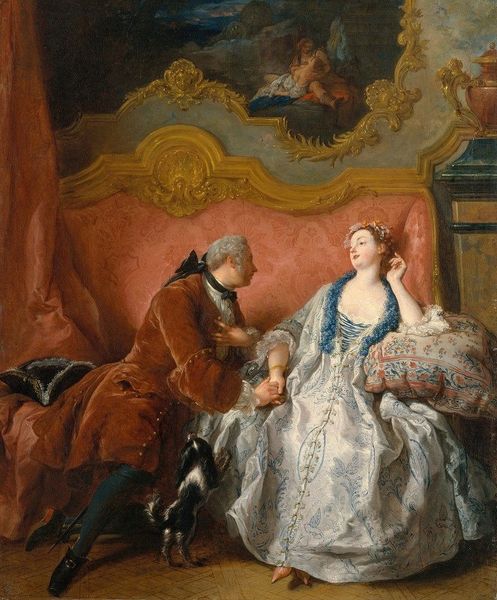
oil-paint
#
portrait
#
gouache
#
oil-paint
#
oil painting
#
child
#
group-portraits
#
genre-painting
#
rococo
Dimensions: 181 x 160.5 cm
Copyright: Public domain
Editor: Here we have "The Graham Children," painted by William Hogarth in 1742. It’s oil on canvas, and quite large! There's a lot happening within the frame, almost chaotic but somehow pleasing to the eye. What's your initial impression of this family portrait? Curator: My attention is immediately drawn to the composition. Hogarth presents us with a dynamic pyramidal structure, stabilizing what could easily dissolve into pictorial excess. The eye moves from the infant to the eldest daughter, a visual ascent reinforced by color gradation. What do you notice about Hogarth’s use of light and shadow? Editor: Well, there is certainly an abundance of light! But it feels localized, spotlighting different textures—the satin of their dresses, the polished wood, and even the soft fur of the cat. What about the contrast with those deeper, richer tones in the background? Curator: Precisely! Those deeper tones serve not merely as backdrop, but to define the chromatic range of the Rococo. The visual vocabulary—those soft pastels, the fluid brushwork—evokes a sense of airy lightness, reflective of the era’s aesthetic preferences. Observe, too, how Hogarth's textures, the smoothness of the children’s skin and ruffles of lace are meticulously rendered. Editor: Yes, I also noticed those very tactile textures. Is there any way to interpret those qualities as representative of this style? Curator: Semiotically, Rococo might signify decadence, but, crucially, it denotes movement, as indicated by his textures and lighting. One notices those small details—like the wilting flower the baby holds—and wonders whether those symbolize any deeper theme about the family that commissioned the piece. These clues invite complex theoretical inquiry. Editor: That’s fascinating. Now that you've broken down the painting, I feel like I can appreciate his method of constructing depth with these objects and children placed together. Curator: Yes, now it's a piece where we can continue learning through observation and research of art history and visual culture!
Comments
No comments
Be the first to comment and join the conversation on the ultimate creative platform.
